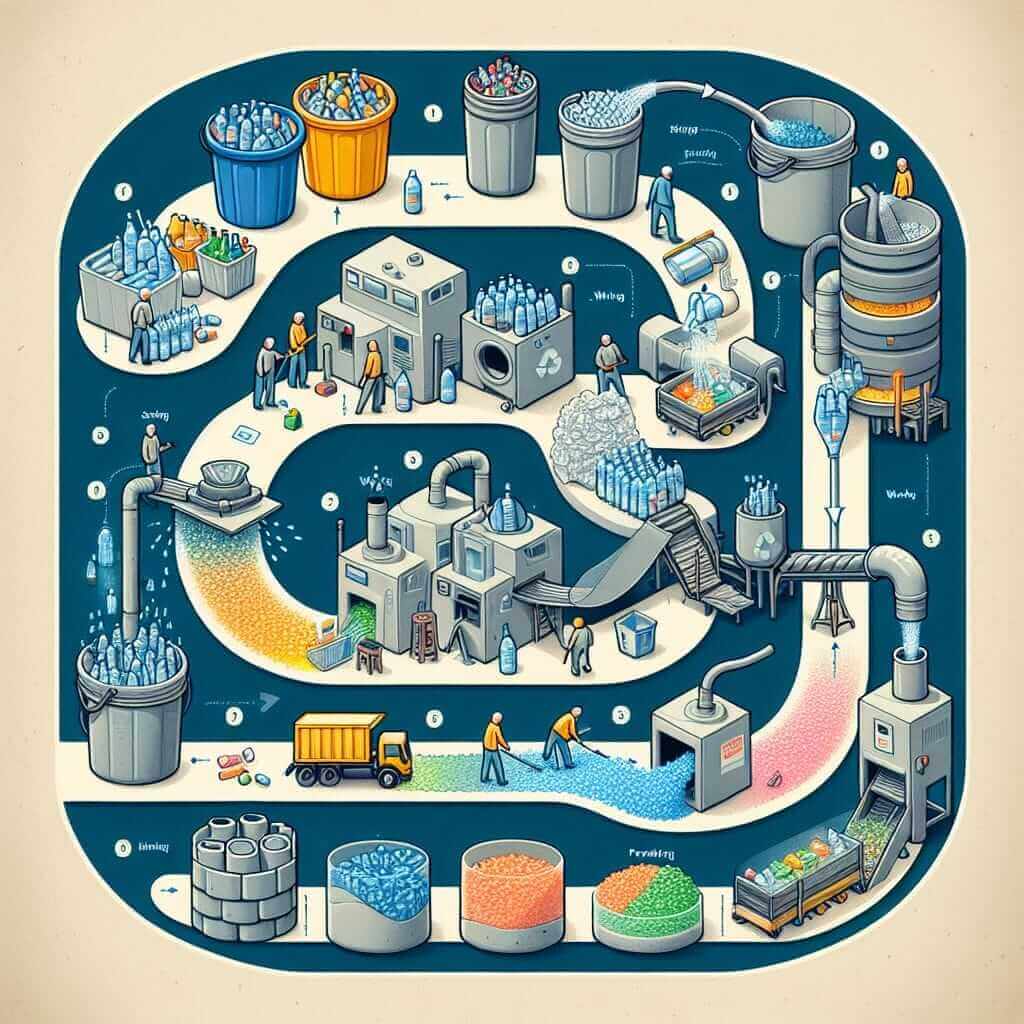Introduction: Mastering the Art of Process Description in IELTS Writing Task 1
In the IELTS Academic Writing Task 1, you may be asked to describe a process. This requires a clear, logical explanation of how something works or is made. Many candidates find this task daunting, but with the right approach and sufficient practice, you can confidently tackle any process diagram and achieve a high band score. This comprehensive guide, crafted with insights from over 20 years of IELTS teaching experience, will provide you with a step-by-step approach to master the art of writing a process essay for IELTS.
Understanding the IELTS Process Essay
What is a Process Essay in IELTS Writing Task 1?
A process essay requires you to describe a process illustrated in a diagram. This diagram could represent anything from the life cycle of a butterfly to the manufacturing process of a product. Your task is to present a clear, concise, and accurate description of this process in your own words.
Importance of Understanding the Process
Before you start writing, it is crucial to understand the process depicted in the diagram thoroughly. This includes identifying the various stages, their sequence, and the relationship between them. Misinterpreting the diagram will lead to inaccuracies in your description, ultimately affecting your score.
Writing an Effective Process Essay: A Step-by-Step Approach
Step 1: Analyzing the Diagram and Planning Your Essay
- Carefully examine the diagram: Identify the starting and ending points of the process.
- Break down the process: Divide the process into distinct stages based on logical steps.
- Understand the connections: Determine how each stage leads to the next and their overall relationship.
- Plan your essay: Organize your thoughts and create a brief outline, highlighting the key points for each paragraph.
Step 2: Crafting a Strong Introduction
- Paraphrase the question: Begin by paraphrasing the question in your own words to demonstrate your understanding.
- State the purpose of the process: Clearly state what the process aims to achieve or produce.
- Overview the main stages: Briefly mention the main stages involved in the process, without going into detail.
Example:
The diagram illustrates the process of recycling plastic bottles, from their initial collection to their transformation into reusable materials.
Step 3: Describing the Process in Detail (Body Paragraphs)
- Use clear and concise language: Employ simple and accurate vocabulary to describe each stage effectively.
- Use sequencing words: Use appropriate sequencing words and phrases (e.g., firstly, secondly, next, subsequently, finally) to guide the reader through the process.
- Use passive voice: Primarily use the passive voice to focus on the actions rather than the doer, as the emphasis should be on the process itself.
- Provide relevant details: Include specific information about each stage, but avoid unnecessary elaboration.
- Maintain logical flow: Ensure a smooth transition between stages, clearly showing how each step connects to the next.
Example:
Initially, used plastic bottles are collected from various sources, such as households and businesses. These bottles are then transported to a recycling plant, where they undergo a series of processes. Firstly, the bottles are sorted and cleaned to remove any contaminants. Next, they are shredded into small pieces, known as flakes. These flakes are then melted and transformed into pellets, which serve as raw materials for manufacturing new products.

Step 4: Concluding Your Essay
- Summarize the process: Briefly recap the main stages of the process and their overall outcome.
- Avoid introducing new information: Do not introduce any new ideas or information in the conclusion.
- Keep it concise: Keep your conclusion brief and to the point, focusing on summarizing the process effectively.
Example:
In conclusion, the recycling of plastic bottles involves a multi-stage process that transforms discarded bottles into valuable resources, promoting sustainability and reducing environmental impact.
Tips for Achieving a High Score
- Practice regularly: Familiarize yourself with different types of process diagrams and practice writing essays under timed conditions.
- Expand your vocabulary: Enhance your vocabulary related to processes, equipment, and materials to describe various stages effectively.
- Focus on clarity and conciseness: Use clear and concise language to ensure your description is easily understandable.
- Proofread carefully: Allocate time to review your essay for any grammatical errors, spelling mistakes, or inconsistencies in your description.
Conclusion:
Mastering the art of writing an effective process essay for IELTS requires a clear understanding of the task requirements, a structured approach, and consistent practice. By following the steps outlined in this guide and implementing the provided tips, you can confidently approach the IELTS Writing Task 1 and achieve your desired band score.